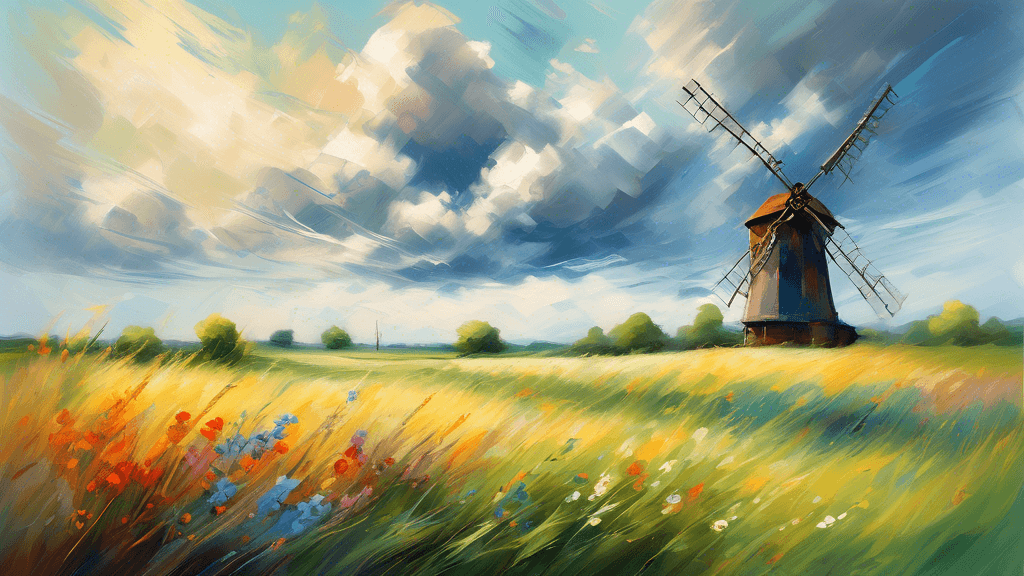
Capturing Movement in Static Landscapes: The Art of Conveying Wind
Share
The Art of Capturing Movement in Static Landscapes
What is it about a photograph of a landscape that can make us feel as though the wind is rustling through our hair, or the grass is swaying at our feet, even though the image itself is perfectly still? The art of capturing movement in static landscapes, particularly the elusive and invisible wind, is a fascinating challenge for any photographer. How can photographers use their cameras to convey the dynamism and energy of the wind?
Understanding the Impact of Wind in Landscapes
Before delving into the techniques, it’s crucial to comprehend why wind plays such a significant role in landscape photography. Wind changes the texture of the environment and can dramatically alter the mood and emotion conveyed by a photograph. But how can something that is not directly visible be represented in a photograph?
Techniques for Capturing Wind in Landscape Photography
Photographers have developed various techniques to record the wind’s effects in their compositions. These methodologies transform an ordinary landscape into a canvas where the wind's presence is both seen and felt.
Long Exposure Photography
One of the most popular methods is using long exposure. By allowing the camera’s shutter to stay open for an extended period, moving elements such as clouds or branches become blurred, conveying motion. This technique can create an ethereal quality, suggesting a whisper of wind. But what does it take to perfect this method?
- Sturdy tripod to prevent camera shake
- Neutral density filter to manage the light intake and prevent overexposure
- Remote shutter release to avoid jostling the camera on pressing the button
Through precise control over shutter speed, photographers can dictate how subtle or dramatic they want the wind's effect to be captured.
Motion Blur
Motion blur, while similar to long exposure, focuses specifically on capturing moving objects such as leaves fluttering in the wind or grass waving. The idea is to set a shutter speed that’s fast enough to retain some texture but slow enough to display movement.
Still Life Against Windy Backdrops
Another compelling approach includes juxtaposing still elements against a backdrop of moving elements. An example could be a sharp, clear mountain peak set against streaking clouds moved by the wind. This contrast not only emphasizes the stillness of certain elements but also enhances the sense of motion provided by the windy backdrop.
Examples and Inspirations
Many renowned photographers have adeptly captured the essence of the wind in their landscape photos. Michael Kenna’s minimalist snowy landscapes often feature trees or poles against a blurred, windy sky, conveying desolation and the strength of nature’s forces. Meanwhile, Ansel Adams used rugged terrains and skies to portray the raw power of the wind.
Practical Tips for Aspiring Photographers
To achieve similar effects, aspiring photographers should consider the following:
- Patience is crucial: Wait for the right wind conditions.
- Observe the direction of the wind and how it interacts with the landscape.
- Experiment with different filters and camera settings to find what best captures the wind’s essence.
Does representing an invisible force like wind excite you? Does it challenge your perspective on what photography can convey?
Bring Your Vision to Life
Photographing landscapes affected by the wind requires not just technical skill but also a poetic vision — envisioning not just what lies before you but also sensing and capturing the unseen. It’s an exciting, challenging pursuit that calls for both creativity and technical acumen. Whether you are a hobbyist or a professional, the pursuit of capturing the wind can lead to stunning, moving snapshots of nature.
If you're passionate about landscape photography, why not explore this technique further? Next time the wind rises, grab your camera and let the invisible paintbrush of nature guide your shots. What stories will you tell with the dance of the wind? Remember, every gust of wind is an opportunity to capture a unique moment of natural artistry.





